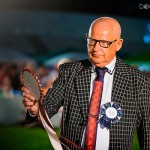Interview with Mr. Frank Sabella • Interviewed by J. Sokolic and J. Danilovic
Published in Best in Show Spring 2014
BIS: Dear Mr. Sabella, thank you for taking the time for this interview for Best In Show Magazine. Please, tell us how you got involved with dogs?
F.S.: When I was 18, I’ve moved away from home because Iíve never had dogs as a child, and when I moved away from home I knew I could have a dog. And I read a story about a Poodle and I decide to have a Standard Black Poodle as it would be the easiest for me to breed because you donít have to worry about the size or anything like that. I bought my first dog from an ad in the New York Times and it was from breeding, which I happen to like because those dogs had good fronts, good heads, not the greatest behind but good enough for me and I bought the dog and gave it to Miss Clark, she finished the dog for me and when it was time to breed it she suggested the sire, we bred the dog and the dog had 3 champions and one even a group winner from the classes. And that was my beginning.
BIS: 1973 your White Standard Poodle, Bart, won Best in Show at Westminster. He was shown in completely different trimming than people used to see. How did Bartís show career change your attitude about the trimming?
F.S.: I didnít want to show the dog in continental trim because most of the Standards were shown in continental trim, I wanted to show the dog in English saddle but I wanted it to be the old fashioned English saddle so what I did was I curled the part that goes over the hips and then I made big wide bands and small pompoms and that was what I wanted to do, and I have trimmed his feet up to above his pastern that you could see that he has those gorgeous feet. And that is the way Iíve changed that. I also sculpted his coat, because he didnít have a lot of main coat because I used to cut it to follow the lines of his neck.
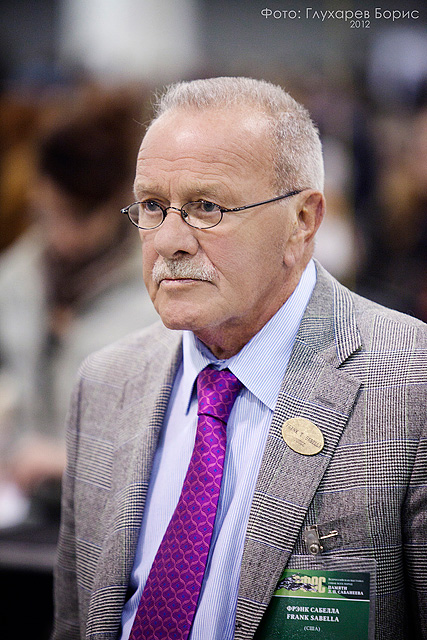
BIS: From the dogs you’ve showed what was your favorite one?
F.S.: From the dogs I’ve showed my favorite one was a Miniature bitch called Tranchant Anabelle and this bitch is one of the few dogs that won at Santa Barbara Kennel Club twice. Ladies wanted to buy a dog that Nigel Aubrey Jones told her about. I went to England to see it and I didnít like it – I didnít like his name, I didnít like his color, I didnít like anything about him. A friend of mine, Donald Wickens, took me to Manchester where Iíve met Trudy Edge and she is the one that sold me Anabelle.
BIS: What do you consider your greatest achievement?
F.S.: My greatest achievement was with the dog called Fredrick of Rencroft.The way he was trimmed later changed the standard.
BIS: Have you ever had mentor?
F.S.: Annie Clark taught me everything I know about the dogs. She was not only my mentor she was my inspiration as well. She had those magic hands for dogs.
BIS: Being a handler can be very exhausting. Did it ever cross your mind to stop working with dogs?
F.S.: The thing about being addicted to dogs is that it is your passion. Once the passion goes it’s finito. My kennel opened every morning at 6 o’clock and many times I was there till 11-12 at night.
I would drive to Texas which is an 18 hours drive, and show at 11 shows, get in the car, drive home without sleep, get to the kennel and start to bathe dogs and there was no end. It was my passion that kept me going. Now when I think about it in retrospective I think I had to be crazy and I was crazy. And now I feel the same way about the judging.
BIS: Do you remember your last show as a handler?
F.S.: I remember it very well. I went BIS at Westminster in 1974 and I’ve made up my mind that I will go to 2 more shows as a handler. I retired in 1974.
In the US to become a judge you have to get rid of your kennel and wait a year. In that period of time a friend of mine said to me that I should become a real estate agent. After doing a real estate course Iíve become a top real estate agent for 4 years, so my mind was not on the dogs.
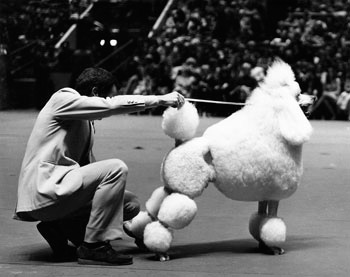
BIS: How do you define type?
F.S.: Dogs with type for me are the ones that come the closest to what the breed was bred for historically. And for me type is as important as anything, because for me if a dog doesnít look like its breed, when standing still, I donít want to see it. And for me a Poodle is a square dog with a beautiful refined head and the most important thing is its shape. It must be square. And I like good feet and good bones, just the right amount of angulation and not over done as you can see nowadays in many breeds which are not supposed to be like that.
BIS: What makes the Poodle special for you?
F.S.: I love the breed because of their character, which is unbelievable. They are clowns, wonderful housedogs; they want to be with you, they do anything to please you. They are a wonderful breed to own. But now that I am retired the breed I would love to have would be a Greyhound.
BIS: How did Poodles changed over time?
F.S.: The Standards Poodle has improved because we are getting more dogs that fit what the standard says they should be. When I’ve started quality of Miniatures was on a higher level than today. But when PRA came on the scene a lot of people bred to dogs that didn’t have the problem but also didn’t have the quality, so the quality went down. And now we are coursed with these squirrel tails. And that is another thing I love about the dog, Afterglow Maverick Sabre (editor’s note: BIS at Crufts 2014), because even though his tail is uncut it is straight.
BIS: Which Poodle lines would you like to mention as the best quality lines?
F.S.: Kathy Poe from California which has bred miniatures for years. Even today the ype she breeds is correct. Then there was a woman, who bred Bart, she was also a great breeder. Becky Mason in Standard Poodles, Michael Gatsby in England. These are people, which are doing or have done a fantastic job in breeding.
BIS: Every breed has some common problems. Which is the most common problem in Poodles? Is there something you would like to change in the breed?
F.S.: If I was God and I could correct the fronts I would be very happy. One of the dogs with a great front and one of the best producers of fronts is Brighton Minimoto bred by LíDyne Brennan. Unfortunately not a lot of people bred to this dog, to change this breedís fault.
BIS: What is your favourite cut on a Poodle?
F.S.: My favourite trim is the English saddle, the old fashioned with the curly pack, the big wide in between and the small puffs. It is hard because it is more work, you have more scizzoring to do but for me it is the classic trim.
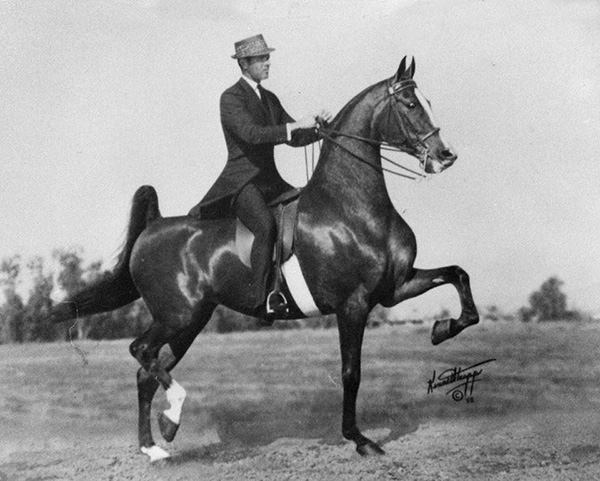
BIS: What is your greatest disappointment?
F.S.: My greatest disappointment is that I was not tall enough to show Command Performance. Because when you saw this dog go behind the car his gate was unbelievable but he needed a Bill McFadden to show him because I was too short and I could never show him at the right gate. And when you could see the dog going from my house to the kennel you get gooseflesh, because his carriage was perfect. He lived in my house and slept in my bed always. When I would get up in the morning at 6 o’clock he would wake up and look and he would go back to sleep.
BIS: Please mention 2-3 Poodles which are not owned, bred or shown by yourself, that you particularly admired, and tell us what you most admired about each.
F.S.: Bitch who takes my breath away is GCH CH Dawin Hearts On Fire the bitch from Canada (PCA WINNER). Linda Campbell over the years produced many top winning dogs and in my opinion this bitch is one of the best she has ever bred. I would like to meet her so I can tell her that she is doing a fabulous job.
But the most beautiful standard poodle I have ever seen is Afterglow Maverick Sabre who won BIS at Crufts this year. I think he is magnificent. For me he is perfection. I would love to own him, I would love to have bred him and show him just once.
BIS: How do you feel about the current standard, is it adequate for the breed or would you like to change it?
F.S.: I think the Standards has reached perfection. The Miniatures unfortunately have lost their beauty. And toys, thank God for somebody like Toshinori Omura from Japan who manages to be able to produce such beautiful dogs. Otherwise those two varieties would be in big trouble.
BIS: What qualities do you admire most in a judge?
F.S.: The judge that understands the breed that they are judging and is strong enough to apply their knowledge to what they know is right. Michele Billings or Annie Clark had an intuitive feeling for dogs and that is something you are born with. Just like an eye for dog, you are born with it, it is a gift from God. And they had this ability that they could go to a young puppy and approach it and go over every part of it without disrupting it at . The thing I admire about Michele Billings the most was that she could give your dog Best in Show today and tomorrow she could beat it in the breed because she didnít think it is in the right muscle condition, ìitís not showingî in other words.
She never judged as a memoir.
BIS: If you were in charge of things ìdog showî what change would you make first?
F.S.: The whole attitude of this sport has changed. In the old days we had people with lots of money and big kennels who were breeders basically. They went to an important show under a judge that they admired because they wanted their opinion as for what they were doing in breeding; they wanted their stamp of approval. These days most of the exhibitors come to the show just for one reason and that is a ribbon. And that is something I would like to change.
BIS: When did you start you judging career and why did you chose to become a judge?
F.S.: I’ve become a judge in 1974. I think that dog game was good to me and I thought now I have to give something back.
BIS: Do you have a favorite show?
F.S.: My favorite show of time was the old Santa Barbara show and I loved it because we had some of the best judges from Europe like Hans Lehtinen, Reiner Bornen The great shows are usually run by two people and not a committee, because the committee want to have judges that will put them up. But when two people run it they give the breeds fabulous judges, that know the breed, and that’s what the dog shows should be about.
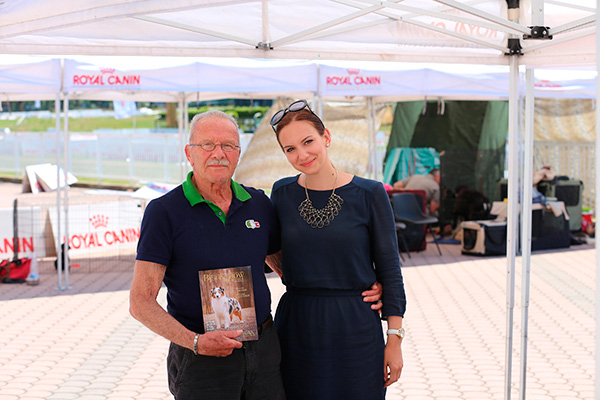
BIS: Is there any country you love traveling to as a judge?
F.S.: If I could judge in Russia and in Japan every week I would be very happy. Those are my two favorite destinations. Russia is special to me because of ballet which is my love. If I could go to the ballet every day I would be very happy.
And my great dream is to go to Russia and to watch 10-year-old girls take classes because they are perfect to me.
BIS: Are there some colleagues that you regard very highly?
F.S.: I could make a big list for you. Bjorg Bodegard, Hans Lehtinen, Stefan Sinko. Stefan is a judge who is strong enough to apply his knowledge to what he knows is right for the breed he is judging. A few years ago at Eukanuba he judged Bulldogs and I went specifically there to see his judging. I am walking by and I see these people sitting there and I said, ìGod, your Bulldog is beautifulî. ìOh, but Mr Sabella, weíve done nothing the first 3 days. I said to them, ìwell today you have a specialist for a judgeî. In the end Stefan put him Best of Breed from the classes, regardless everybody was applauding for one bitch.
BIS: Do you have some goals you still want to achieve; which ones?
F.S.: My goal is to see Diana Vishneva dance. If I can see her dance Giselle I would be very happy.


